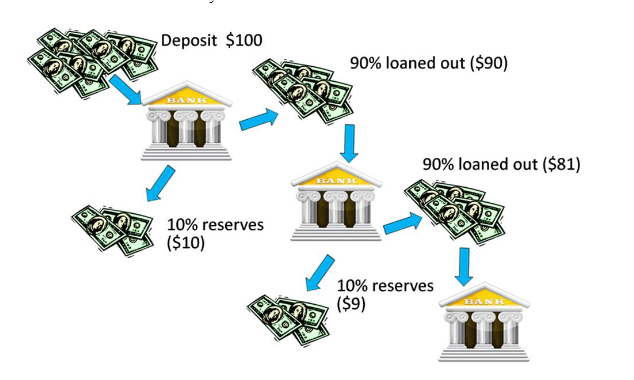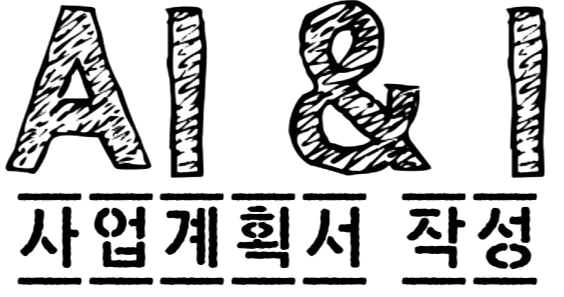Then, how is the money we use today created? In fact, anyone can create money. It does require the condition that friends trust me, but a promissory note I write to a friend can also become money. Most countries on Earth create money in the same way as my promissory note. Even governments do not arbitrarily print money. Let’s say there’s a newly independent country. And if it has to issue money for the first time, what the government can do is to issue bonds, that is, promissory notes.
Of course, if the government and the central bank were a single institution, it could simply print money. However, no country in the world prints money through such a simple procedure. This is to maintain the trust and stability in the value of money. Let’s say a country named Village of the Hundred, with a population of 100, decides to circulate a new currency worth 10 billion dollars. Usually, the following steps are taken to create money.
First, the people of the Village agree that the government can create 10 billion dollars. Then, the government goes to the central bank that prints money and agrees on the interest and repayment period for issuing 10 billion dollars in government bonds. Once an agreement is reached, the government prints 10 billion dollars in bonds and brings them to the central bank. In return, the central bank prints new money and deposits it into the government’s bank account.
Economists call this money created High Powered Money, which is the cash we talk about. Now, 10 billion dollars have been created in the Village.
It may not look much different, but the process of creating money in this way is significantly different from the government arbitrarily printing money. Good money is money that is trusted. But how can the central bank trust the government? It’s because the government is thought to be able to collect taxes from its citizens. Therefore, the essence of the money we use is debt, backed by the taxes of the citizens.
Another characteristic of money created in this way is that the money supply must continually increase for the monetary system to sustain itself. This is because the government bonds also carry interest.
Let’s say the government collects all the money in the country to repay the debt to the central bank. Can it repay everything? It’s impossible. The money printed by the central bank is only the principal. There’s no money to pay the interest, so there’s forever no way to repay the debt. Thus, we and our descendants must continue to produce more and the economy must continually grow.
If the state continues and no one works, there may come a time when it’s impossible to pay the interest. One might consider borrowing more money from the central bank to pay the interest. There’s no other way since there’s no money in the world. In reality, if money does not continue to increase, a country’s monetary system cannot be sustained, and if the economy does not grow, inflation can occur at any time.
This is not the end.
Checks: Money Created by Banks
Not only governments incur debt. Many individuals and companies also maintain economic activities using debt. They create money by issuing promissory notes. The government does not immediately use the cash received from the central bank. Probably at first, it will all be deposited into a general bank account the government owns.
Now, private banks will try to make money using the money in their vaults. In most countries, with a banking license, even if it’s not owned by the bank, it’s possible to lend money to others with the money deposited in the bank. Of course, a portion of the deposited reserves must be kept as statutory reserves to prepare for customers withdrawing money.
There are various forms of bank loans, and they have different maturities, so there must be money prepared to respond when customers suddenly come to withdraw deposits. Although it’s problematic if everyone comes to withdraw money at once, it’s assumed that such a situation does not usually happen.
That’s the thinking behind the central bank mandatorily holding a certain amount for banks, known as the ‘reserve requirement system.’ In other words, the central bank holds a certain percentage of the banks’ deposit amounts forcibly and returns it when needed.
Let’s assume that the legal reserve ratio set by the governments of various nations is 10%. If the government deposits $10 billion in a bank, the bank must keep 10% of that money, or $1 billion, in reserve and can lend out the remaining 90%, or $9 billion. However, the lent $9 billion does not necessarily leave the bank. In fact, it can be deposited right back into accounts within the same bank at the time of the loan. Moreover, when we withdraw large sums of money, it is often not in cash but in the form of checks issued by the bank. These checks represent money created by the bank. Essentially, most of the real money we borrow ends up back in the bank.
If the entire $9 billion lent out returns to the bank, then again, 10% of it, or $900 million, must be kept in reserve, and the remaining 90%, or $8.1 billion, can be lent out. This money, once deposited back into the bank, triggers another cycle where 10% is kept in reserve and the rest is available for loans. If this process continues, the bank can create up to $100 billion, starting with the original $10 billion.

This can be generalized as ‘1/reserve ratio’, meaning if the reserve ratio is 10%, then money can be multiplied by 10 times. The maximum money that can be created is $100 billion, and subtracting the central bank’s original $10 billion, the money created through loans by the bank amounts to $90 billion. If the reserve ratio were 2%, then 1/0.02 equals 50 times the money can be created.
Economists refer to this process as bank credit creation, and the extent to which money increases is called the money multiplier effect. That is, when the central bank supplies base money, the amount of money increases by the money multiplier. Therefore, ‘1/reserve ratio’ becomes the maximum money multiplier, because that’s the maximum amount of loans that can be created by the bank.
In the case of South Korea, as of January 2009, the reserve ratio is about 7%, and the money multiplier is approximately 26 times. Therefore, if the base money is 54 trillion won, the money created by banks would be around 1,350 trillion won.
Thus, not only the government but also banks create more money based on the money we deposit. This money comes into existence because someone borrows it from a bank. Essentially, most of the money circulating in the market is created through debt. Moreover, all this debt carries interest, varying only in amount. Importantly, without loans, the amount of money exceeding cash would not increase. If all borrowers repaid their loans, only the money issued by the central bank would remain in circulation.
The money created by the central bank and commercial banks ultimately comes from the government creating money against future taxes and from people who borrow from banks. This money circulates in our economy, mainly used for transactions. Although savings in the form of deposits are also made, these deposits are essentially money kept for future use.
The story of money does not end here. Besides the government and corporations, many other entities are creating debt, which can also be considered money.

